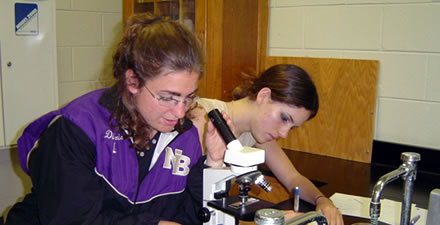Drugs, Detectives and DNA
| Author: | Patricia Ligon |
| Level: | High School |
| Content Area: | Chemistry, Biotechnology, Forensics |

| Author: | Patricia Ligon |
| Level: | High School |
| Content Area: | Chemistry, Biotechnology, Forensics |

Unit 1: Biology of Neurons and the Nervous System using the NIH module: "The Brain: Understanding Neurobiology through the Study of Addiction." Lesson Plans, Student Notes and Labs
Lesson Plan 1
Lesson Plan 2
Lesson Plan 3
Lesson Plan 4
Lesson Plan 5
Lesson Plan 6
Resources and References:
Material for this unit available from: http://science.education.nih.gov/customers.nsf/highschool.htm
Unit 4 "The Brain: Understanding Neurobiology through the Study of Addiction"
(an NIH module, with worksheets and a CD available at http://science.education.nih.gov/customers.nsf/highschool.htm
I. The Brain
A. General Regions: Different areas regulate different functions
C. Limbic system:
D. Imaging:
II. Structure and Function of Neurons and Neuron Transmission
A. Neuron structure: axon, synapse and dendrites
B. Neuron function: transmit signals via electrical and chemical activity (action potential)
C. Neurotransmitters:
III. Drugs change the way Neurons function
A. Examples: nicotine, alcohol, cocaine, marijuana ________
B. Affect the reward area
C. Affect the presynaptic postsynaptic are or the uptake pumps etc.
D. Drugs of abuse do not block enzymatic destruction of neurotransmitters
E. Antidepressants can block enzymatic destruction of neurotransmitters
F. The dose is the poison, threshold can change
IV. Addiction and Drug Abuse
A. Define Addiction
B. Define Drug Abuse
C. Genetic predisposition
V. If Drug Addiction is a Disease, how do we deal with it?"
A. recurring chronic disease
B. Treatments
C. Relapse
This unit is based on NIH module: "The Brain: Understanding Neurobiology through the Study of Addiction". http://science.education.nih.gov/customers.nsf/highschool.htm Lesson Plans, Student Notes and Labs Unit 4